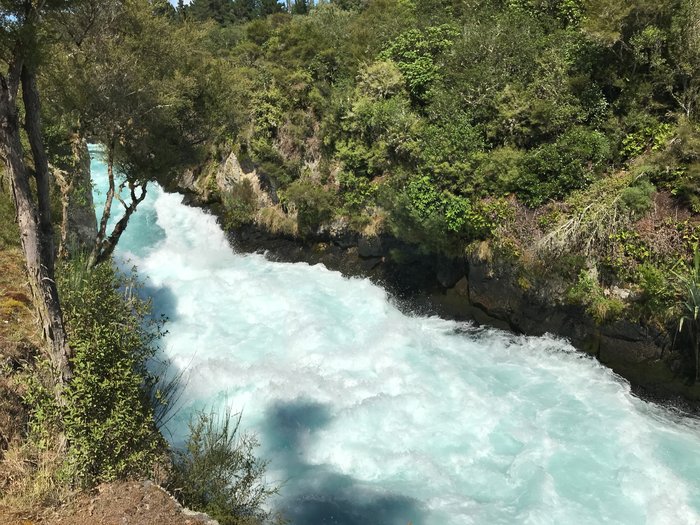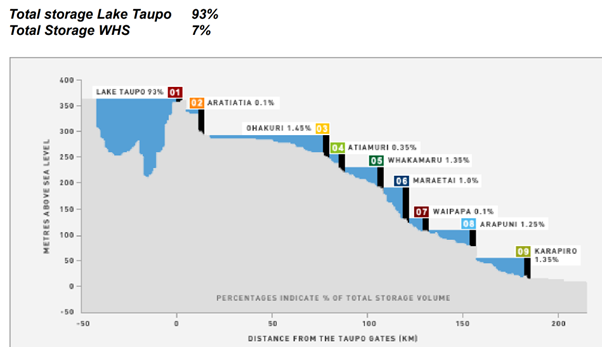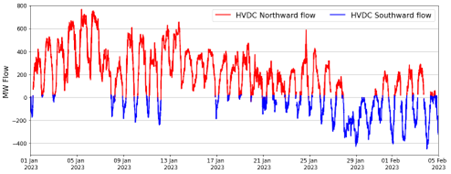Eye on electricity
The impact of our climate on hydro generation
- Distribution
- Generation

Over 50% of New Zealand’s electricity is produced by hydro power. New Zealand’s largest hydro schemes, the Waitaki and Manapōuri, are in the South Island. While there are hydro dams in the North Island, these schemes have a smaller capacity. Since the North Island has higher electricity demand, the South Island generated electricity is often transported north via the HVDC inter-island cable.
In January 2023, the oceanic and atmospheric phenomenon known as La Niña, contributed to dry weather in the South Island, and wet conditions across the upper half of the North Island. Lakes Manapōuri and Te Anau experienced their lowest January inflows since 1953, while Lake Taupō recorded its fourth highest January inflow. This ‘wet dry divide’ impacted hydro storage and generation across the country.
Until early February this year, low rainfall in the South saw hydro storage in lakes Manapōuri and Te Anau drop below their low-operating ranges. Meridian, who operate Manapōuri power station, then had strict limits on how quickly the lake levels could drop further. This reduced their ability to generate electricity.
In contrast, heavy rain in the North Island saw Lake Taupō’s storage reach its maximum agreed limit. Mercury had to spill water downstream into the Waikato River, in line with resource consent requirements with Waikato Regional Council. This was controlled, due to heavy rain and to prevent further flooding downstream. During the heavy rain, Karāpiro dam outflows were above 500 cubic metres per second, resulting in some minor flooding in Hamilton.
Mercury has nine hydro generation dams on the Waikato River, with additional streams also supplying more water at various points in the chain. Each dam has a different amount of water that can be stored directly above it (see Figure 1). It takes about 24 hours before water released from Lake Taupō reaches the final dam at Karāpiro. No one event may be the same in terms of how much water is flowing in from which streams.
Mercury must carefully manage these many complexities when deciding how much water to release from Lake Taupō, how much and when to generate from each dam, and how much they might need to spill at Karāpiro - all while complying with various resource consents.
With plenty of water in the North Island, and restrictions on water usage in the South, there were high transfers of electricity southwards across the HVDC cable. Mercury generated a total of 414 GWh in January from its Waikato hydro stations – the highest over the previous nine years (during January) was 332 GWh. Southwards flows over the HVDC reached above 400 MW at some points (see Figure 2).
In the previous nine years, only one other had southward HVDC flows which reached higher than those seen in January 2023. This occurred in 2018, when there were extreme weather events in the North Island in January and low hydro storage in the South Island.
NIWA forecasts that La Niña conditions1 will continue over the next few months. New Zealand’s extreme conditions may therefore persist, which will impact hydro storage and generation. Climate change may also mean these extreme events become more common in the future.
The Electricity Authority regularly monitors New Zealand’s hydro generation and storage. Find out more on our EMI website.


Note - gaps in the figure are a feature of the plotting – not zero MW HVDC flows.
Related News
Centralised wind and solar forecaster contract awarded
The Electricity Authority has awarded a contract to provide centralised wind and solar forecasting services to DNV Services.
Battery energy storage systems roadmap released
We have published a draft two-year roadmap that sets out our work to support investment in battery energy storage systems (BESS). BESS will become increasingly…
Consultation open on distribution system operation models
We are consulting on three alternative models for distribution system operation as part of the Future System Operations project.